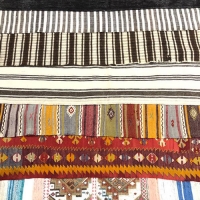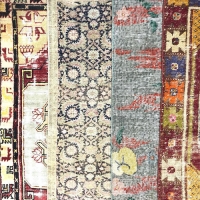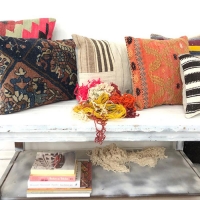
Turkish Rugs
A Turkish rug refers to any rug that is handcrafted in Turkey. Turkey has a rich history and tradition of rug weaving that dates back centuries, and Turkish rugs are renowned for their exceptional craftsmanship, intricate designs, and high-quality materials.
Turkish rugs come in a variety of styles, patterns, and techniques, each associated with specific regions in Turkey. Some of the well-known types of Turkish rugs include:
Anatolian Rugs: These rugs are woven in the Anatolia region of Turkey and encompass a wide range of styles, such as Hereke, Kayseri, Konya, and Sivas rugs. They feature diverse designs, including geometric patterns, floral motifs, medallions, or pictorial scenes.
Kilim Rugs: Kilims are flat-woven rugs made using a technique called slit-weave. They are known for their bold colors, geometric patterns, and durability. Kilims can be used as rugs, wall hangings, or decorative textiles.
Oushak Rugs: Oushak rugs, also known as Uşak rugs, are woven in the Oushak region of western Anatolia. They are characterized by their soft, lustrous wool, low pile, and subtle color palettes. Oushak rugs often feature large-scale floral or geometric designs.
Turkish Prayer Rugs: These rugs are specifically designed for religious use during prayer. They typically have a mihrab (prayer niche) design at one end, symbolizing the direction of Mecca.
Turkish rugs are typically hand-knotted or flat-woven using natural materials like wool, cotton, or silk. They are known for their exceptional quality, longevity, and ability to add warmth, beauty, and cultural heritage to any space. Turkish rugs are highly sought after by collectors, interior designers, and rug enthusiasts worldwide.



